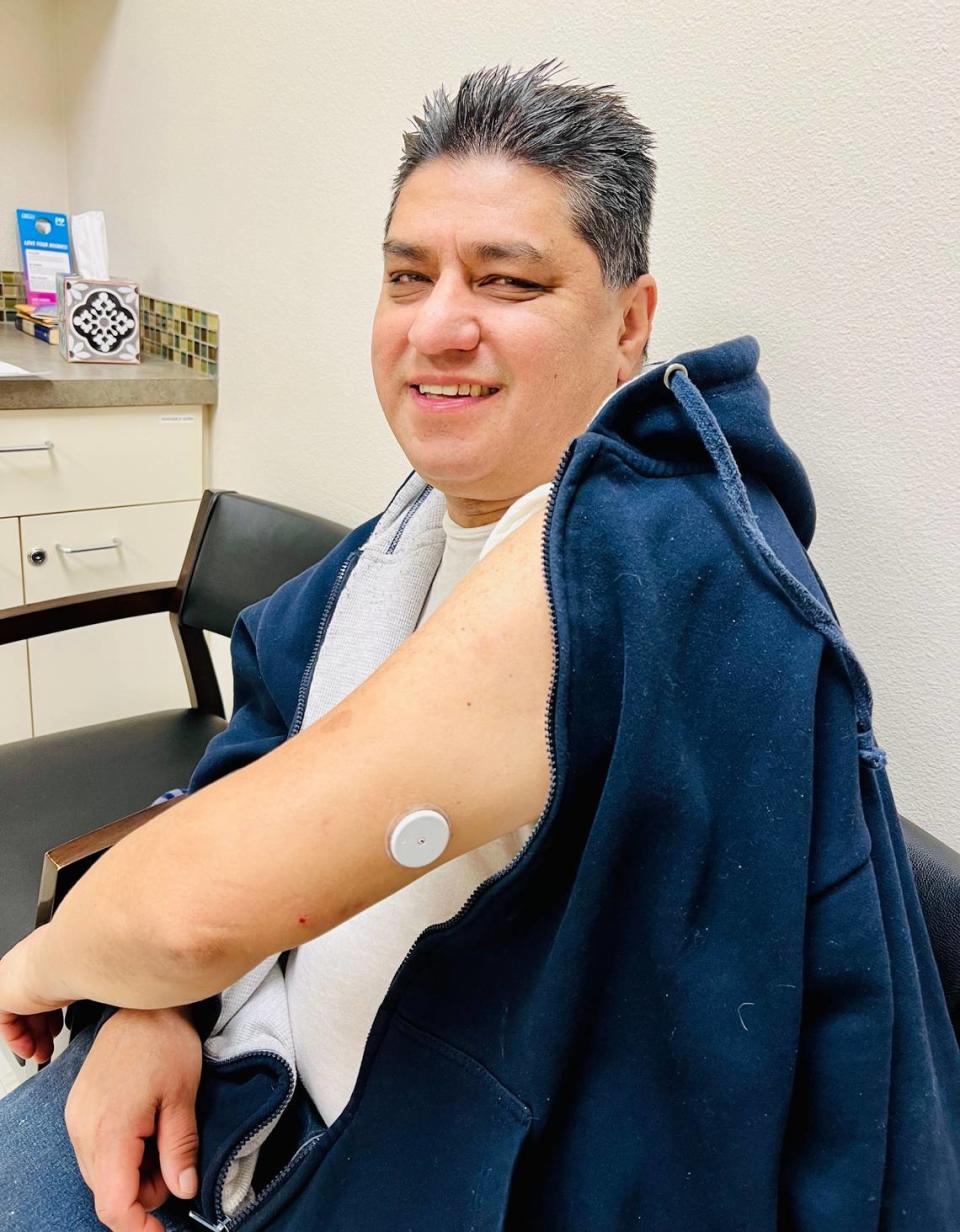$56K donation will change the lives of 90 patients at free Tri-Cities Grace Clinic
Diabetes patients at Grace Clinic are getting help managing their condition with technology most couldn’t afford on their own.
“I think we we’re going to see some life-changing differences in patients’ health,” said Kathryn Brault, a diabetes specialist and the medical director at the clinic that provides free care to uninsured adults in the Tri-Cities.
Greater Health Now of Kennewick, a regional nonprofit working on health care and social needs projects, provided a grant of $56,000 to buy continuous glucose monitors for Grace Clinic.
They are used for real-time management of diabetes, a chronic disease that can be life-threatening.
“Poorly managed diabetes is the leading cause of blindness, kidney failure and lower-limb amputations in the United States,” Brault said. “But when a person with diabetes has a simple, pain-free way to get real-time feedback about their glucose levels based on what they just ate, it’s a life-changer.”
Just over 20% of patients at Grace Clinic have diabetes.
Over the coming months, up to 90 of those patients who are having difficulty controlling their blood sugar will be able to use the continuous glucose monitors for real time feedback and information to make help make decisions about food and exercise.
One of the first monitors went to a patient whose high blood sugar had been giving him headaches and making him tire more easily at his job stocking items at a Tri-Cities area retail store.
He typically had been pricking his finger to get a drop of blood to test a few times a day using a glucometer and test strips that gave him results in a few seconds.
Brault recently started him on a continuous glucose monitor, a disc the size of a quarter that adheres to his arm.

The disc contains a sensor that monitors his glucose levels constantly. He can quickly and discreetly scan the device at any time with his smart phone for a real-time check of his glucose.
The app on his phone shows him the ideal glucose range and whether his is rising, falling or stable.
He can respond by adjusting his food intake, exercise or insulin immediately and then scan his monitor again to track his progress.
“I used to poke my finger three times a day, but with the CGM, I can see the report whenever I want,” he said. That might be 20 times a day.
“I’m eating less tortillas, rice and red meat, and more fish and vegetables,” he said.
The changes have given him more energy at work, even during long swing shifts.
His glucose levels had been “alarmingly erratic,” Brault said.
But that’s changed. At his last appointment, his glucose levels and his blood pressure had improved significantly, she said.
Brault was able to see the data collected by the monitor and adjusted his insulin plan as a result.
Unfortunately, most patients will not be able to use the monitors long term.
The disposable sensors have to be replaced every 14 days, which is expensive for a person without health insurance.
Two sensors for four weeks of monitoring cost about $140 using a GoodRx coupon.
Some patients don’t have smart phones to read results. Instead, they must pay a one-time cost of about $79 using a GoodRx coupon for a device that can be used as a scanner.
The plan is to use the grant money to give patients a month or two of continuous glucose monitors to give them insight into what and when they eat and their activities are affecting their blood glucose levels.
“It will change their lives and really change their health,” Brault said.

